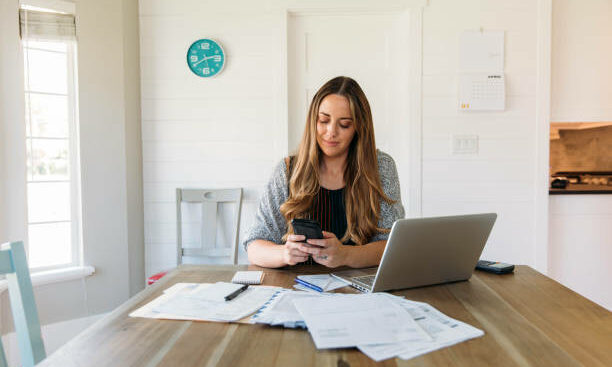Don’t wait until tax time to begin readying information
Tax time can be tricky for almost anyone, but this can be especially true for those who work for themselves. Turning to a CPA when filing—or better yet, in the months before—can help reduce the inevitable headache and possibly the amount of money owed in late fees or missed deductions through several well-prepared steps.
1. STREAMLINING THE APPROACH
CPA Bob Gore, founder of Robert Gore & Associates Chartered Professional Accountants, says a common error is the “ready, aim, fire” approach that some people take with their business. “The most significant problem,” he says, “is what I would call organization and structure, where people jump right out of the gate and assume they need to organize their business in a particular way.”
To start, Gore recommends connecting with a CPA who can direct you to the required forms for self-employed business income, such as the T2125, Statement of Business or Professional Activities. In turn, the owner will need to provide their CPA with a better understanding of their actual business. Doing so allows their accountant to better advise them on tracking expenses, whether to register for a GST or HST account—as well as assist with your registration, if possible, and more.
2. SETTING ASIDE MONEY FOR TAX PAYMENT
For those moving from being a salaried employee to self-employed, saving for quarterly tax payments can be overlooked (after being accustomed to having automatic EI and CPP deductions).
After the first year, “If you owe more than $3,000 in income tax, the CRA wants you to make quarterly instalments,” says FCPA Colleen Gibb, co-founder of accounting firm Gibb-Widdis, noting this can create a cash-flow challenge.
When collecting GST/HST from clients, Gore reminds that this money must be set aside since it has to be paid to the CRA.
Accountants, she says, can help prepare a budget and ensure enough is set aside to avoid cash-flow challenges. “I find most people can cope very well if they know what they’re going to owe.”
It is important that your tax return is filed on time and tax payments are not late to ensure interest and penalties do not arise.
3. GETTING A GST OR HST ACCOUNT
When you’re self-employed, you may not need a business number—at least not to start. If you do need a business number, you’ll need to determine if you need to register for programs such as GST or HST. Across Canada, a GST or HST number is only required once a business makes $30,000 annually. Below that threshold, registration is not compulsory.
However, Gore says that missing the opportunity to register is a common error because “the HST they’re paying on their expenses is just a cost rather than a potentially recoverable item,” such as through input tax credits, he says. To avoid this, an accountant can review a self-employed person’s business and advise on the need to obtain a business number and register for GST/HST, as well as how to set that up.
4. TRACKING EXPENDITURES
Remembering to record expenses in real time can be tricky for many people.
“The biggest key is making sure that you can account for all the transactions on your bank statement or credit card and have all the invoices,” says FCPA Bruce Ball, vice-president of taxation at CPA Canada.
Acquiring this habit will simplify tax preparation and alleviate the painstaking attempt to recover each business purchase made throughout the year.
Keeping business expenses separate from personal finances is another step to streamline records.
“Use a separate bank account for the business and designate one charge card for it,” says Gibb. “If audited, the CRA will only look at that bank account and those credit card statements.”
5. UNDERSTAINDING CLAIMABLE EXPENSES
While creating a system to track expenses is important, understanding which expenses can be claimed is also a key for businesses.
Here, a CPA can help convert pre-existing life expenses—such as home office and vehicle expenses—to business expenses to maximize the claimable amount. Gore says this can be recorded in a basic Excel spreadsheet or through software such as Quicken Home and Business—depending on the individual’s comfort level.
“The critical thing is to get yourself organized and be aware that you need to keep track of it all for purposes of being able to claim costs for business rather than personal spending,” he says.
Of all claimable costs, entertainment fees have the most restrictions. “Only 50 per cent of those expenses are deductible,” says Gibb.
She advises that people write down who they dined with on the back of the receipt and file that away, as the CRA will not accept a credit card statement for this claim.
BENEFITS EXCEED THE COSTS
While some people may be hesitant to ask for guidance long before tax season, the benefits cannot be overlooked.
“Even spending an hour talking to a CPA will pay dividends,” says Gibb. “Now you’ll know what to expect, what to set aside when the things are due and what to watch for.”
The article originally posted in cpacanada.ca


